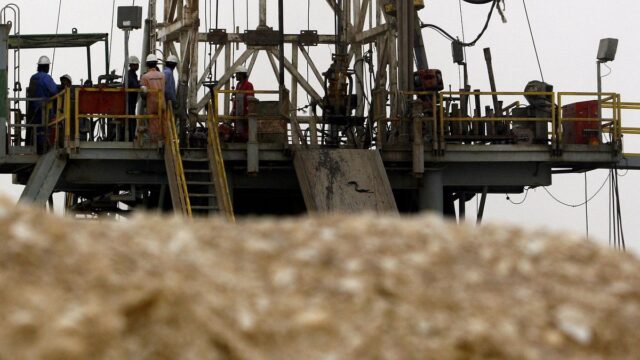Crude oil prices rose to two-month highs on optimistic demand prospects and declining US reserves, sparking fears of a resurgence in inflation.
Crude oil prices chained two weeks of increases and reached their highest level in almost two months last week, due to optimism regarding summer fuel consumption in the northern hemisphere and the reduction of US reserves. Two weeks’ earnings in crude oil prices They represent a 7% increase for both Brent and WTI futures.
Brent futures, expiring on September 25, reached $86.24 per barrel on Friday, the highest level was recorded on May 1before moderating its gains and opening Monday slightly above $84 per barrel.
More than 82 dollars per barrel
Last Thursday, WTI futures expiring on August 4 They exceeded $82 per barrel for the first time since April 30before retreating to $80.41 per barrel at Monday’s open.
On June 3, the Organization of the Petroleum Exporting Countries, OPEC, and its allies agreed to extend the oil production cuts of 2.2 million barrels per day until the end of September, with a gradual elimination of the production reduction from October. Initially, the decision cut the oil prices that week, but they rebounded quickly starting June 5.
Fall in crude oil inventories in the United States
According to the US Energy Information Administration, EIA, crude oil inventories decreased by 2.5 million barrels, to 457 million, in the work week ending June 14. Analysts expected a reduction of 2.2 million barrels those days. The stock level is 4% lower than the five-year average for the same period.
Total fuel stocks decreased by 2.3 million barrels compared to the previous week, standing at 231 million barrels, which represents the first decrease since May 17. The EIA predicted that the fuel demand Distillates will begin to rebound in the second half of the year due to the increase in manufacturing activity.
On the other hand, the count of oil platforms In the United States, it has been declining for a month straight since the work week that ended on May 31. The total number dropped to 485 last week, after peaking at 511 in the work week ending April 19, according to Baker Hughes.
Growing demand for oil
According to a report from JP Morgan Chase, fuel consumption soared to a post-pandemic high of 9.4 million barrels per day in the United States in the work week that ended June 14. It is expected that the fuel consumption continue to increase as the Independence Day holiday, July 4, approaches, when 71 million Americans are expected to travel.
Globally, oil demand increased by 1.4 million barrels daily due to the busy summer travel season in both Europe and Asia. In particular, China, the largest oil importer in the world, will experience a 1.7% increase in fuel demand, equivalent to 3 million tons, in 2024, according to Sinopec, the largest Chinese refiner. Chinese retail sales rose 3.7% year-on-year, beating the estimate of 3.0% and 2.0% in the previous month.
Geopolitical tensions and weather risk drove increases
Geopolitical tensions may also have added to the upward pressure on the oil prices. The war in the Middle East was in an escalating phase, as the Israeli authorities declared that their country was prepared for a “total war” against Hezbollah, Lebanese Shiite party. This led Hezbollah to threaten a “no holds barred” battle against Israel. The possible domino effect of the conflict once again raised fears of further disruptions in oil production and transportation.
The seasonal severity of weather conditions may also have contributed to the rise in oil prices. The US National Oceanic and Atmospheric Administration defines the Atlantic hurricane season as starting June 1, posing risks to production and refinery operations.
Pressure on inflation
Despite a pullback at Monday’s open, both Brent and WTI futures held steady. a maximum level of almost two months of recordsraising concerns that global inflation could rise again on fuel prices and slow the pace of rate cuts by central banks.
Recent data showed that inflation became persistent in some major European economies in May due to high pressures on utility prices and the oil. Rising crude oil prices could further darken the inflation outlook.
Although the lowering of rates by the European Central BankECB, this month, the entity maintained a hardline stance, emphasizing that new decisions will be addressed “meeting by meeting.”
Globally, most central banks, including the US Federal Reserve, tempered expectations for more than one rate cut this year as inflation remained well above its target level in the country.
Crude oil prices and inflation have been positively correlated since the start of the war between Ukraine and Russia. Therefore, any indication of a price resurgence of oil could dampen the mood of the stock markets. Investors will closely follow the upcoming inflation data for world economies in this last week of June.








